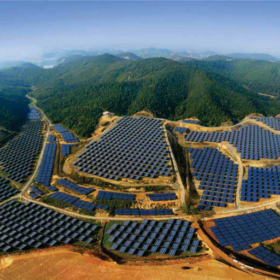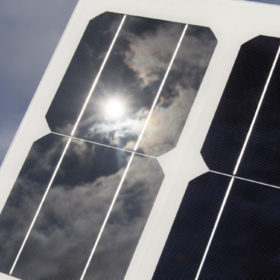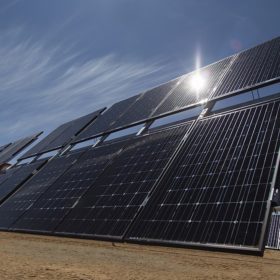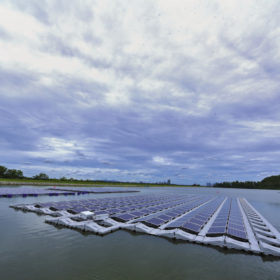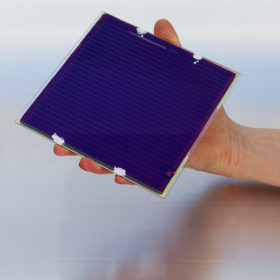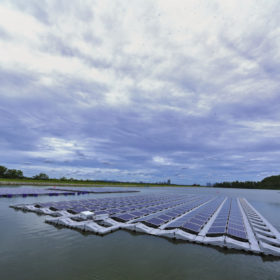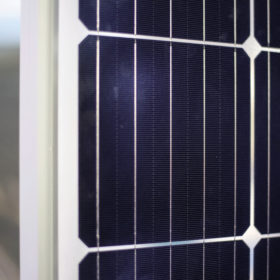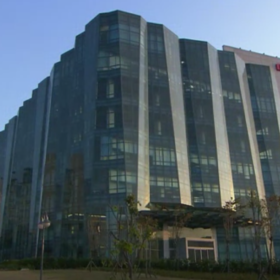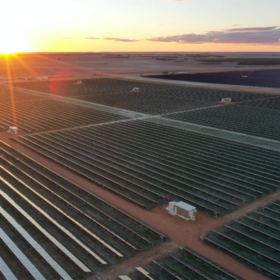JinkoSolar shipped 11.4 GW of modules in 2018
Chinese module manufacturing giant JinkoSolar today published its financial results for the full year 2018. While the company achieved an impressive 16% growth in shipments over the previous year, its total revenue took a 5.4% hit compared to 2017, thanks to falling module prices throughout the year.
Long read: Reflections on a soiled module
Having quickly proven their performance boosting potential and durability, anti-reflective coatings are now found on the majority of modules rolling off the world’s production lines. Today, coating suppliers are looking to tackle losses from soiling as well as reflection, and working to keep up with cost reductions and extended lifetime expectations at module level. Older modules, installed without a coating, could also be set to benefit from their latest innovations.
New model for calculating bifacial boost
Belgian research institute imec has developed a new simulation framework it says can calculate the expected output of a bifacial PV system. The model could help improve developer understanding of the best system configurations for bifacial, and foster confidence among investors by providing a precise prediction of energy yields.
Long read: Staying afloat, whatever the weather
From a little known niche just a few years ago, floating solar has quickly grown to more than 1 GW of installed capacity worldwide, and a source of great hope for the industry’s future, particularly in countries where space for solar is at a premium. pv magazine spoke with experts from leading floating PV test centers in Singapore and the Netherlands to outline the challenges still faced by floating PV as the technology moves towards major growth.
German scientists develop new process for stable perovskites
A team of researchers from Germany’s Martin Luther University Halle Wittenberg has developed a new approach to perovskite cell production, which they say could result in better stability and longer lifetimes. The team also made detailed observation of the perovskite’s formation and decay, which could help to inform further research into high performance solar cells.
Sunseap to build 5 MW floating PV at sea
Project developer Sunseap has announced plans for one of the world’s largest PV systems floating on seawater, to be built in the Johor strait which separates Singapore and Malaysia. The 5 MW system is expected to be completed in the first quarter of 2019.
Solar performance polluted by urban haze
Research conducted over several years by scientists at the Massachusetts Institute of Technology (MIT) demonstrates that air pollution in cities can put a dampener on the performance of PV panels which, if not taken into account, can threaten a project’s viability.
PV Info Link: Mono-cSi cell price drops below multi
According to PV Info Link, the price for monocrystalline cells in China fell below that of the usually cheaper multicrystalline products. However analysts expect it to be a blip, with multi prices expected to fall and mono to be supported by the Top Runner Program, now China’s main source of demand for the rest of 2018.
UNSW scientists surpass 10% efficiency with CZTS PV cell
Researchers at UNSW have surpassed 10% efficiency for a cell based on copper zinc tin sulfide – sulfide kesterite. It is the fourth time in two years the group has set a new record for the efficiency of cells based on such materials.
Taiwan’s Neo Solar Power narrows loss ahead of merger
Taiwanese cell producer, Neo Solar Power has posted a net loss of NT$390 million (US$12.75 million) for the second quarter of 2018. Though indicative of the difficult times currently facing Taiwan’s cell manufacturers, the figures represent a 39.3% reduction compared with the previous quarter’s loss.

